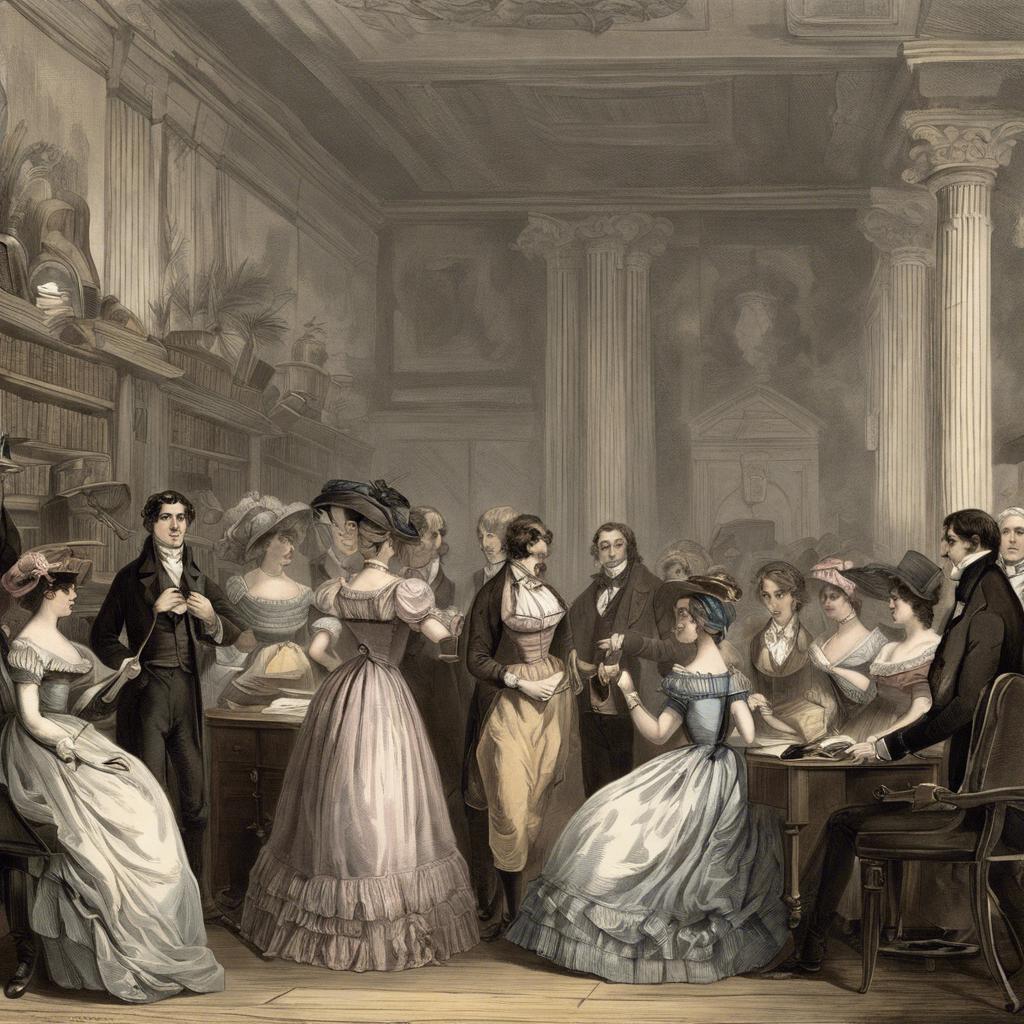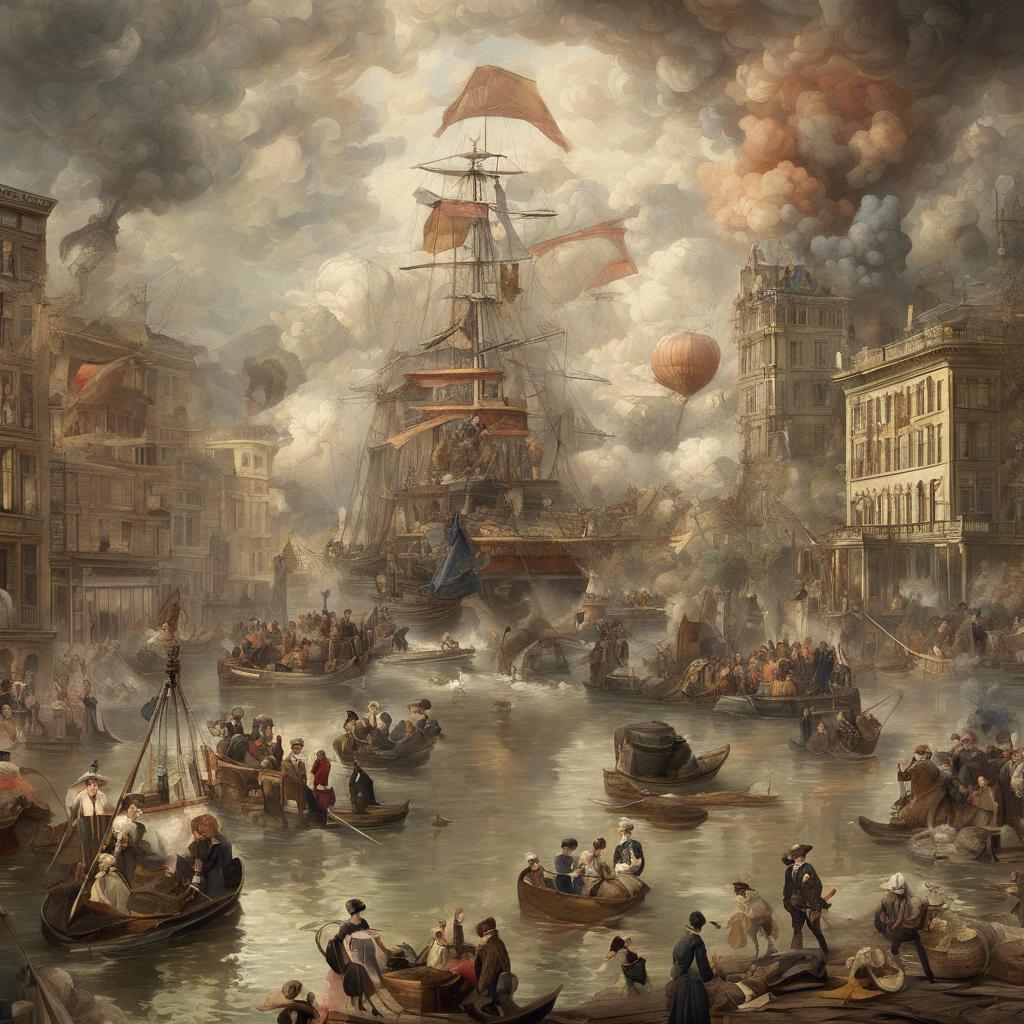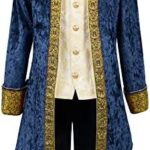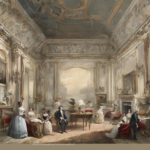The Regency Era of the early 1800s marked a transformative period in British history, characterized by the rise of new cultural and social trends. Defined by the reign of George IV as Prince Regent, this era witnessed a significant shift in politics, fashion, and leisure activities. Delve into the historical intricacies of this fascinating period as we explore the key events, influential figures, and lasting legacies of the Regency Era.
Step Into the World of Cheryl Bolen
Dive into the enchanting stories of love, intrigue, and elegance set in the Regency Era. Cheryl Bolen's novels offer timeless romance and captivating tales that will leave you wanting more.
Explore Cheryl Bolen's Books Now
Introduction to the Regency Era: A Glimpse into the Society of the 1800s
The Regency Era, spanning from 1811 to 1820, was a captivating period in British history characterized by elegance, social refinement, and political upheaval. This era marked the reign of King George IV, who ruled as Prince Regent due to his father’s mental illness. The Regency Era is known for its unique blend of societal norms, fashion trends, and literary masterpieces that continue to influence modern culture.
During the Regency Era, the social hierarchy was firmly established, with strict codes of conduct governing interactions between the aristocracy and the common people. Balls, soirées, and salons were popular social events where elaborate etiquette was observed, showcasing the opulence and sophistication of the upper class. Despite this facade of glamour, beneath the surface, political tensions simmered as revolutionary ideas spread throughout Europe.
One of the defining features of the Regency Era was the emergence of Romanticism in literature and art. Renowned writers such as Jane Austen, Lord Byron, and Percy Bysshe Shelley captured the essence of the era through their works, exploring themes of love, nature, and individualism. This period also saw a rise in architectural innovations, with the iconic Regency style blending classical elements with intricate detailing, leaving a lasting impact on urban landscapes.
Fashion Trends of the Regency Era: Elegance and Sophistication in Attire
In the regency era of the 1800s, fashion was characterized by elegance and sophistication in attire. Women’s clothing was known for its delicate and flowing silhouettes, emphasizing a slim waistline and graceful movement. The iconic empire waist dress, with its high waistline just below the bust, was a staple of regency fashion. These dresses were often made from lightweight fabrics like muslin or silk, adorned with intricate embroidery or delicate lace trimmings.
Men’s fashion in the regency era also exuded refinement and class. Gentlemen often wore tailored coats with high collars, fitted waistcoats, and breeches that fell just below the knee. Cravats, or neckcloths, were a popular accessory that added a touch of sophistication to a man’s ensemble. The overall look was polished and dapper, reflecting the social customs and etiquette of the time.
Accessories played a key role in completing the regency era look. Women wore delicate gloves, parasols, and bonnets adorned with feathers or ribbons to complement their outfits. Men often carried walking canes and wore top hats or tricorn hats for formal occasions. Jewelry was also a significant part of regency fashion, with pearls, cameos, and diamonds being popular choices to add a touch of opulence to both men’s and women’s attire.
Regency Literature: Exploring the Works of Jane Austen and Sir Walter Scott
In the regency era of the 1800s, two prominent literary figures emerged, shaping the landscape of English literature: Jane Austen and Sir Walter Scott. These authors were known for their distinct writing styles and their contributions to the genre of regency literature.
Through her novels such as Pride and Prejudice and Sense and Sensibility, Jane Austen captured the societal norms and class dynamics of early 19th-century England with wit and charm. Her characters and storytelling continue to resonate with readers today, making her a timeless literary figure.
Sir Walter Scott, on the other hand, delved into historical fiction, often romanticizing Scotland’s past in works like Ivanhoe and Waverley. His writings sparked a renewed interest in the history and culture of the British Isles during the regency era, earning him a lasting legacy in the literary world.
Regency Architecture: The Rise of Neoclassical Design in the 19th Century
Regency architecture of the 19th century saw a remarkable shift towards neoclassical design, reflecting the elegance and sophistication of the era. Architects during this period were inspired by the classical forms of ancient Greece and Rome, incorporating grand columns, symmetrical facades, and ornate detailing into their designs.
One of the key features of Regency architecture was the emphasis on balance and symmetry in building composition. Buildings were often designed with a central entrance flanked by matching windows on either side, creating a sense of harmony and order. The use of classical elements such as pediments, pilasters, and entablatures further enhanced the grandeur of Regency buildings.
Notable examples of Regency architecture include the Royal Pavilion in Brighton, designed by John Nash, and the iconic terraced houses of London’s Regent’s Park. These architectural masterpieces showcase the elegance and sophistication of the Regency era, setting a standard for neoclassical design that would influence architectural trends for years to come.
Insights and Conclusions
the Regency Era of the 1800s was a pivotal period in British history, marked by elegance, refinement, and societal change. From the reign of George IV to the turbulent times of the Napoleonic Wars, this era is defined by its unique blend of power, culture, and social norms. As we look back on this remarkable chapter, we are reminded of the enduring legacy of the Regency Era and its lasting impact on the world we live in today. It is a period that continues to captivate us with its grandeur and sophistication, leaving behind a rich tapestry of history for generations to come.


